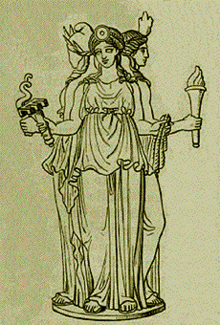 Ritual and Cult at Ugarit (Writings from the Ancient World) by Dennis Pardee
Ritual and Cult at Ugarit (Writings from the Ancient World) by Dennis PardeeMy rating: 4 of 5 stars
Some how I was not so jazzed about this book. It was scholarly and well written but it was just too dry. It would be great for the scholar and to get anything out of the book you need good background knowledge of Canaanite Mythology. The book is based on finding of Ugaritic religious text uncovered or at Ras Shamra. Contained in this book are Deity list, steps for how to do certain rites, drinking or Marzihu rites along with incantations and Historiolae.
One major problem I found with the book was that the texts were far from complete. In fact in certain of the texts major chunks were missing. This is no fault of the author who is just trying to relay the information as he receives it. Perhaps a possible remedy was to include some background or filler information in layman terms that would make for informative and interesting reading.
One learns that there are several cults in Ugaritic religion not just one central religion. This work focused on the cult of the royalty. The religious text tells on what days certain sacrifices should be made and to what gods and what days they should be made. The king is told to bathe where to begin and when his responsibility his ended. The text does not tell where the sacrifices happen and from where the animal sacrifices should come from. It does not say to who it goes to either. It seems that sacrifices to male gods were more frequent but that part of the animal could be eaten. When the fewer sacrifices were made the entire animal was burned or part of it was given to the water.
The deity lists show heavy Babylonian influence and even have Sumerian words in them. This could be from the Amorites who preceded then in ruler ship of the area . The Amorites also assimilated Babylonian culture quite readily. While certain religious components show Babylonian, Hurrian and Hittite influence the Ugaritic texts pertaining to divination shown marked difference from Babyonian characteristic and that of the neighbors. Be it known that deity names and language from surrounding cultures had definitely seeped in.
Incantations were mentioned especially in a defense against snake bits and scorpions who were thought to have been sent by sorcerers. Ugarit Magic was geared primarily for defense against sorcerers and the evil eye. The evil eye in Canaanite magic is seen as a separate entity apart from the sorcerer. There are also defenses against incantation, familiars of sorcerers and companions of sorcerers. Lastly there is a defense against male impotence which was also thought ton be cause by a sorcerers magic.
Over all an acceptable book that is geared mostly toward the scholarly. If I was a layman I would enhance my knowledge elsewhere.
View all my reviews

























